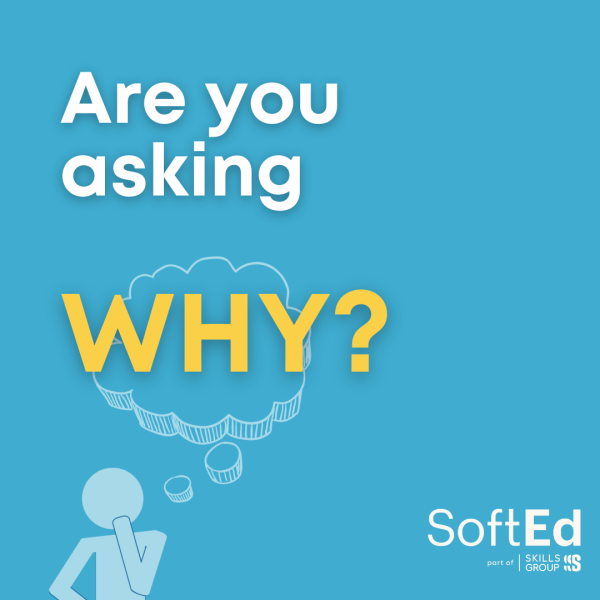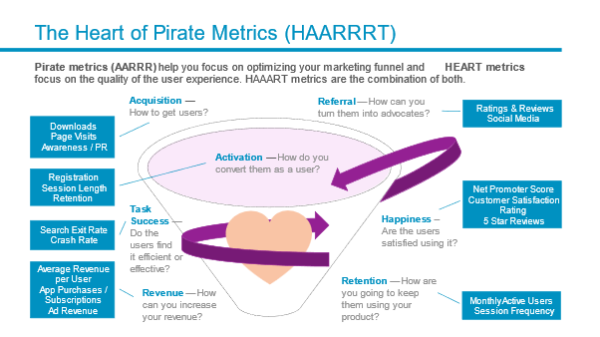Why the "Why" in Product Management

In the realm of product development, understanding the "why" is paramount. It's not just about building what is asked for, but comprehending the goals and outcomes of the initiative. This understanding is crucial for everyone involved, from the product managers to the developers and other stakeholders.
Even more important then the “why” for the single product or value stream is a clear understanding of the bigger “why” for the organisation as a whole.
“Why” at many levels
Teams building products need to have a very clear understanding of the factors that matter to the success of the organization, such as financial objectives, customer objectives, product/service objectives, and employee/internal objectives. The highest-level goals need to be expressed in measurable business outcome terms, and they provide clarity of direction for the whole portfolio of products and value streams that contribute to success for the organisation.
The next level of “why” is a set of outcome measures for the specific product or value stream. There are a number of metrics frameworks available to help identify outcomes for a product or value stream. Two that work together well are the HEART and Pirate (AARRR) metrics, as we depict them in the SoftEd Product Management class:

The Importance of Outcome over Output
In product and project management, it's essential to align the development process with the overarching goals of a company. Often, teams focus solely on delivering outputs, which may not necessarily lead to desired outcomes or have a meaningful impact on business metrics.
Outputs are the tangible deliverables created within specific timeframes or sprints. However, relying solely on outputs without considering the subsequent impact can lead to misaligned business metrics and dissatisfied clients. Measuring outputs can be useful at the team or value stream level as it can provide information for teams to adapt their work and processes as part of continually looking to improve, but those metrics should generally be private to the team.
On the other hand, outcomes reflect the consequences and impact of those outputs within the business. They provide a holistic understanding of how the deliverables are being utilized and their true value in achieving business goals.
The Role of Product Managers
Product development is the life-blood of companies and societies. The product could be a physical product such as an automobile, smartphone, or coffee maker. It could also be services such as new IT solution, new manufacturing process, or a new real estate marketing concept.
The first and most important reason for any new development is to provide new value to the customer. Without this, there is no reason for them to trade their money for the new device. However, if the product or service offers overwhelming value, then customers will flock to it.
Product Managers play a critical role in driving successful outcomes. While outputs remain important, the emphasis should be on maximizing the impact and value delivered to the business and end-users. This requires a shift in mindset, moving beyond simply delivering outputs and focusing on understanding and measuring the outcomes they generate.
Advice for Product Management
Product management is an ongoing and iterative process of evaluating and exploring potential opportunities, getting feedback, learning and adapting in order to ensure we solve the right problem. Here are some concrete steps that can be taken to help:
Identify strategic business driver: Recognize the key influences or factors that matter to the success of the organization, such as financial objectives, customer objectives, product/service objectives, and employee/internal objectives.
Align projects with strategic business drivers: Ensure that projects undertaken by the organization are aligned with the company's strategic business drivers. This helps in prioritizing projects based on their relevance to the overall business strategy.
Communicate goals and objectives: Clearly communicate the organization's goals and objectives to all team members, ensuring that everyone is aware of the direction the company is heading and how their work contributes to achieving these goals.
Collaborate with stakeholders: Engage with the wide community of stakeholders at all levels of the organization to gain insights into their perspectives, needs, and expectations. This helps in aligning the product development process with the goals and outcomes of the initiative.
Monitor progress: Regularly track the progress of projects and initiatives against the organization's goals and objectives. This helps in identifying areas for improvement and making necessary adjustments to stay on track.
Review and adjust goals: Periodically review and adjust organizational goals based on changing business drivers, market conditions, and other factors. This ensures that the organization remains agile and responsive to evolving business needs.
Understanding Why from the User Perspective
At the individual product or value stream level there are a number of specific techniques which can help bring clarity around the user needs and link those to the organisation outcomes. These include:
User Interviews: Conducting one-on-one interviews with users allows teams to gather in-depth information about their experiences, needs, and preferences. This helps in understanding the user's perspective and identifying their pain points.
Focus Groups: Focus groups involve a moderated discussion with a group of users, allowing teams to explore user preferences, gather initial reactions, and generate ideas. This method is particularly useful during the early stages of product development, when there is more flexibility to make significant changes.
Usability Testing: Usability testing involves observing users as they interact with a product or prototype, evaluating its effectiveness, and identifying areas for improvement. This method helps teams validate design assumptions and ensure that the product meets user needs and expectations.
Empathy Mapping: Empathy maps are visual tools that help teams understand users' feelings, thoughts, and behaviors in relation to a product or service. They provide a holistic view of the user experience, allowing teams to identify opportunities for improvement and create more empathetic products.
By employing these user research methods, teams can gain a deeper understanding of their users' needs, preferences, and expectations, ensuring that the product development process is aligned with the goals and outcomes of the initiative. This, in turn, leads to the creation of products that deliver value to the customer, the business, and society at large.
Conclusion
In today's competitive landscape, understanding the "why" is paramount in product and project management. By understanding the consequences of our outputs, measuring their impact on business metrics, and applying the scientific method to learn and improve, we can ensure our projects and products make a meaningful difference.
Understanding the "why" helps in developing a product strategy that is crucial for the success of any product. Defining clear goals and objectives, conducting market research, and developing a product roadmap are essential steps in the process.
In the end, it's not just about building what is asked for, but understanding the goals and outcomes of the initiative. This understanding is crucial for everyone involved, from the product managers to the developers and the stakeholders. It's about creating value for the customer, the business, and society at large.
We'd love to help you hone in on your "why" and ensure your processes support your business goals.
______________________________________________________________
This article was written by Shane Hastie, Global Delivery Lead at SoftEd part of Skills Group.
Thank you!
Your details have been submitted and we will be in touch.